What to do with your first grader when school is cancelled
Are you trying to figure out how to homeschool your first grader when you’re stuck at home due to school cancellations?
I’m here to help!
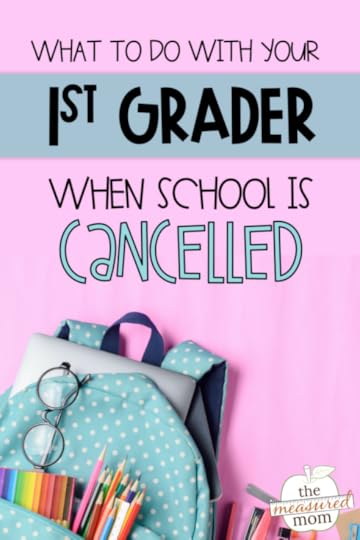
Our family is slowly adjusting to our new “normal” … Homeschooling.
Even though I’m a former teacher and now have a houseful of kids age 4-12, I never planned on homeschooling.
But here we are.
As we seek to stop the spread of COVID-19, many of us find ourselves home with our kids without anywhere to go.
Here are some tips for teaching your first grader at home.
*Only free resources are included in this post, but you are always welcome to check out my shop and online membership.
How to teach your first grader
If you have assigned work from the teacher …
If you already know what your child needs to do – and you just need to��do it – here are some tips:
Keep your regular waking up/going to bed routine.
After your child has breakfast, move into “school time” as soon as possible.
Start with the work that requires the most patience from you and your child. Get that out of the way while you’re both fresh.
Recognize that homeschooling your first grader may take just two hours (max) a day, and that’s perfectly fine. You are not failing your child if your school day is fast. Remember that much of a first grade teacher’s day involves managing a large group (I speak from experience here).
If you don’t have a lot of guidance from the school (or want to supplement) …
Reading
First graders are all over the map when it comes to reading ability, so you’ll want to ask your child’s teacher what s/he needs to work on. Let’s start with some phonics skills.
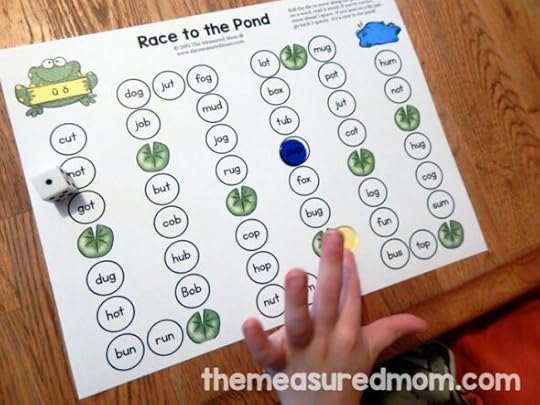
Make sure your child is fluent with CVC words.
CVC stands for consonant-vowel-consonant. These are the first words we teach kids to sound out (words like��cat and��bug), and I have loads of freebies on my site. Check them out below:
Try this word building mat with cards.
Print and use these CVC word board games.
Check out all my printables for short vowel words … including simple games and worksheets. Start here and scroll to see them all.
Practice words with beginning digraphs and blends.
If your child is fluent with CVC words, it’s time to move on to the next step.
A digraph is two letters that make one sound (sh, ch, th, wh, kn, wr). A blend is two letters that appear together but make their own sounds (fl, st, etc.).
Here are some single player digraph games.
Here are some 2-player games for digraphs and blends .
More advanced learners can play my fast and fluent games for words with beginning blends.
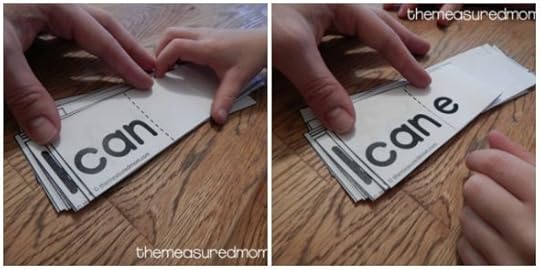
Next come silent e words.
Start with these games that help children hear long vowel sounds in words.
Here are some fold and read cards.��
Try a silent e four in a row game.
Need more? Here’s a giant post with over 50 free printables for teaching silent e words.
Move on to vowel teams.
Vowel teams include long vowel digraphs – such as ee and oa,��as well as diphthongs��oi, oy, aw, au.
Most of what I have for these are in the membership, but here are the freebies from the main site.
Is your child ready to read multi-syllable words?
I have quite a few of these on the membership site but not much here on the free site. You might want to check out This Reading Mama .
Practice sight words.
I would ask your child’s teacher for�� a list of sight words to practice. Then use my free editable sight word games to type in the words you want to practice. Remember to practice just a few at a time, and always mix in words your child already knows.
Schedule time for your child to read on his/her own.
All these phonics skills don’t do much good if we don’t give our learners chances to apply them as they read real books.
This may be difficult if your library is closed (as ours is). If it’s not, however, or you’re not opposed to spending some money, check out this post with a list of books for different levels.
If you are able to print books for your child to read, I HIGHLY recommend Reading A to Z. I have a subscription to this website so I can print books for my youngest readers (even though I don’t homeschool – or at least I don’t usually homeschool).
Great news! Reading A to Z is offering an extended FREE trial. Seriously. Get on over there and print some books for your child. Not sure which books are for your child? Email me (anna(at)themeasuredmom(dot)com, and I’ll try to point you in the right direction.
Handwriting
This is something that can quickly fall apart without daily practice. It’s a good idea to have your child fill out a short handwriting page several times a week.
Free level 4 handwriting pages
Writing
Creative writing is important, but I’ll be honest … teaching writing isn’t easy (even for experienced teachers). This is because writing isn’t easy. Teaching it isn’t supposed to be either.
Don’t give up, though!
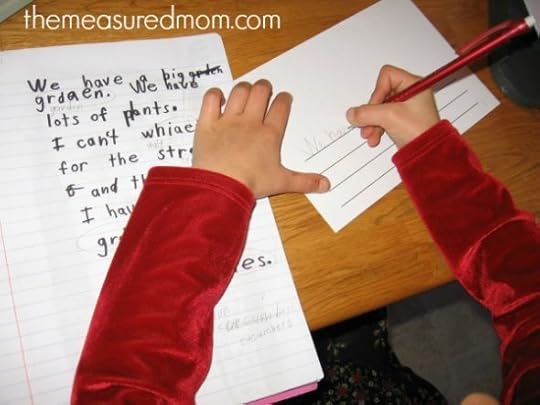
If you’re looking at an extended homeschool situation (more than two weeks), I recommend writing with your child a few times a week; schedule 20-30 minutes each time.
Make sure there’s an audience for the writing. Don’t have your child write just because you say so. Here are some ideas for audience:
grandparents (share it on FaceTime or over the phone)
another parent
a sibling
a friend or neighbor (email it)
someone in a nursing home (mail it)
Consider different genres of writing.
a personal narrative (writing about his/her own life)
writing a nonfiction piece about something he/she knows about, like a particular animal
a how-to piece (how to make a sandwich, etc.)
a letter
a free-verse poem
MODEL first. If you ask your child to write a letter, have him/her watch you do that first.
Writing to a prompt is okay once in a while, but it’s best to have your child come up with his or her own topics. This post will help.
As your child writes, sit down and do your own writing. Helps him realize you’re in this together, and reminds you that writing is challenging – gives you more empathy.
Don’t insist that the work is perfect. Your child needs to spell his/her best. “Invented spelling (also called “developmental” spelling) is necessary for this age. Follow these tips for using it well.
Share it! Read it to a parent or grandparent (use FaceTime or the phone if needed). Email it or snail mail it.
Math
Teach your child to add and subtract within 20.
Free addition games
Free subtraction games
Help your child add 10 and subtract 10.
A simple way to do this is print a free hundreds chart. Play I Spy… (“Can you find the 25?”) Then have your child add or subtract 10 from that number. (“What is 25 plus 10?”)
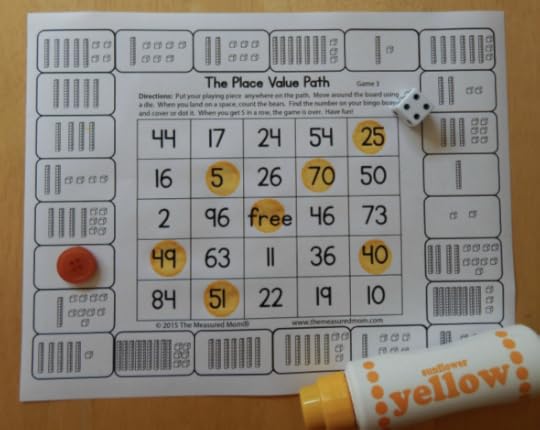
Teach place value (tens and ones) with 2-digit numbers.
Free place value games
Show your child how to add two-digit numbers (without regrouping).
I have free resources for this inside the membership, but not on the free site.
Practice telling time to hour and half hour.
Free telling time games
Teach basic fractions.
I have nothing on the free site, but Life Over C’s has this free fraction pack.
Measure things around your house.
I recommend doing this with nonstandard units at first. How many pennies long is your pencil? How many dominoes long is this piece of paper?
It’s a good idea to estimate first. “How many pennies long do you��think your shoe will be? Let’s check it and see if you were right!”)
If your child is ready, you can pull out a ruler and measure in inches or centimeters.
Practice identifying 3-D shapes.
Go on a hunt around your house. Can you find examples of the common 3-D shapes? (cylinder, cone, cube, triangular prism, rectangular prism, and sphere)
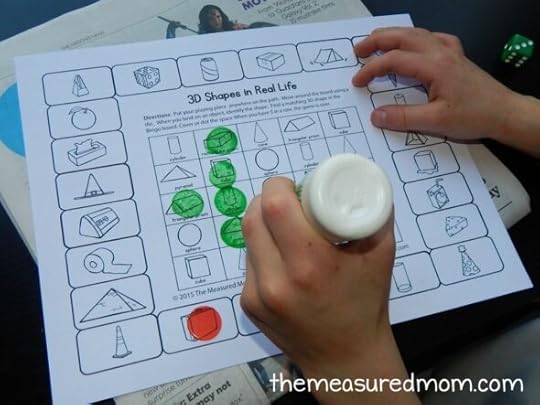
Try these simple one-player games.
Play these 2-player 3-D shape games.
Social Studies and Science
I don’t want to say these aren’t important, but for a first grader they are at the bottom of the list. Your child can learn social studies and science concepts through real life. Don’t stress about these.
Watch a few YouTube videos and have conversations with your child about the world. Seriously, your child will not get behind if you don’t focus on these in first grade.
How should you fill the rest of the day?
Those are the academic skills I recommend working on, but you have a whole day ahead of you. What else should you do?
Read, read, read to your child. Do this as often as possible – for as long as both you and your child are enjoying it. Normally I’d tell you to choose to check out my book lists and head to your library. I realize that may not be an option now. Do the best with what you have.�� Be sure to talk about books as you read. Here are my tips for doing that.
Need books to read but you can’t get to the library?
Get a free one month trial of the app Skybrary (with LeVar Burton from Reading Rainbow) – we used this in the past and loved it.
Get a free one month trial of Epic! , a great digital library for ages 12 and under. We use it and love it.
Get moving. If possible, send your child outside.��As often as possible.��
Pull out things that will keep your child busy.��
Make homemade play dough , or buy it online.
Order kinetic sand . This stuff keeps my kids busy for 30 minutes at a time – or more! Plus, it’s easy to clean up. Pull out cups and bowls, and your child can cook and make sand castles right at the kitchen table.
Do simple art projects. My favorite site for easy, fun crafts to do at home is I Heart Crafty Things . Have fun browsing her site! I also recommend creating small cards/crafts that you can mail to family and friends.
If you can, FaceTime grandparents and other relatives.
Cook together. Here are a bunch of fun ideas.
Do simple science projects, like these.
Encourage your child to play with building toys –�� Legos , Magna Tiles , etc.
Play board games. Good games for first graders include UNO , Mancala , Qwirkle , and Penny Drop .
Find some free drawing tutorials on YouTube. We absolutely love Art for Kids Hub and use it��all the time.�� Here’s a playlist of the easier drawing projects.
Give them screen time. Yes, I said it. I recommend planning this for specific times in the day – as late in the day as possible so you save it for when you really need it. Here’s a list of free education sites for kids.

I hope this helps as you plan for several weeks at home. Please feel free to reach out to me through my email: anna(at)themeasuredmom(dot)com.
My inbox is bursting these days, but I do my best to answer every message.
Hugs to you!
Anna
Check out the full series here
© 2020, Anna G. All rights reserved.
The post What to do with your first grader when school is cancelled appeared first on The Measured Mom.
Anna Geiger's Blog
- Anna Geiger's profile
- 1 follower



